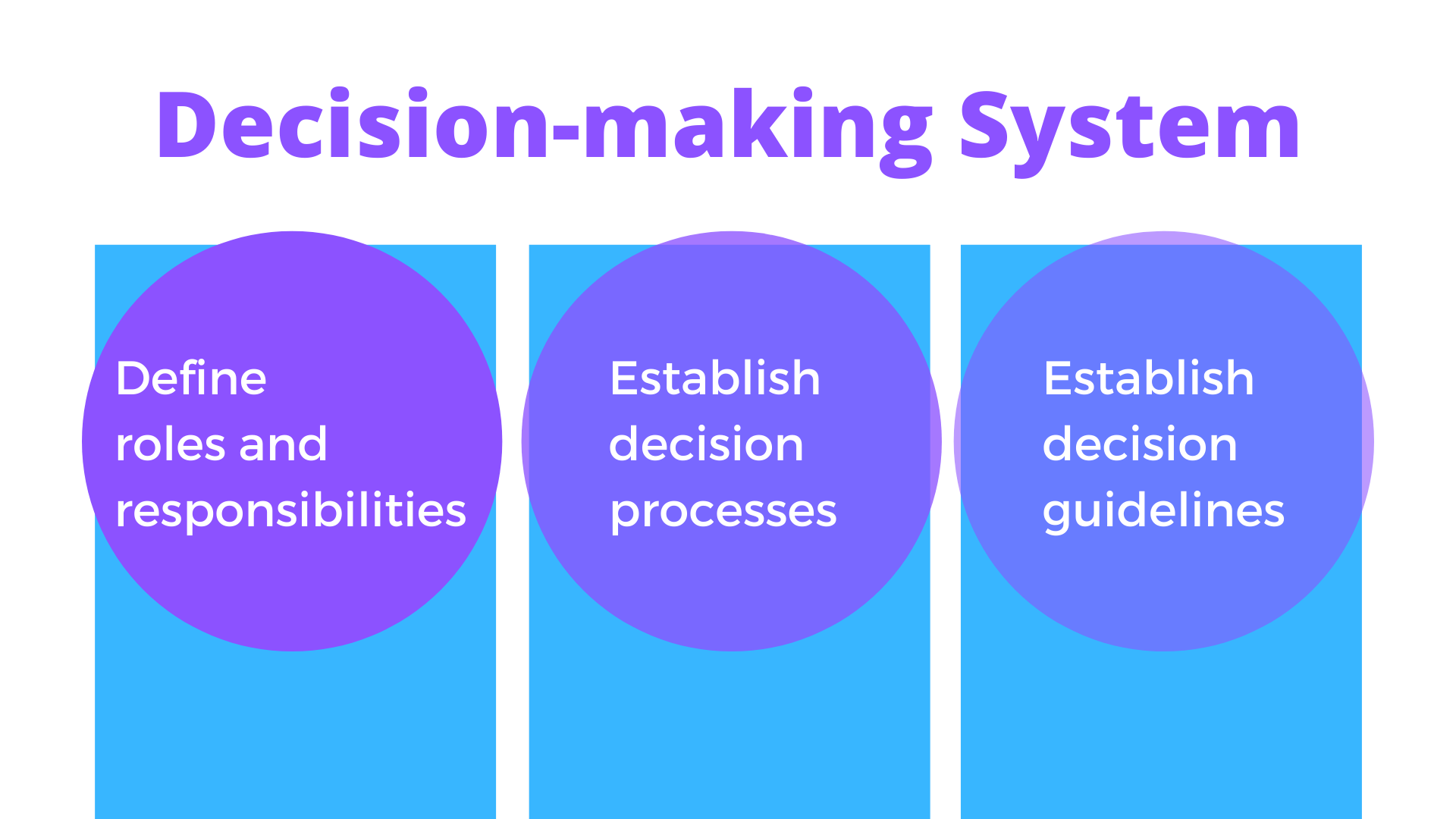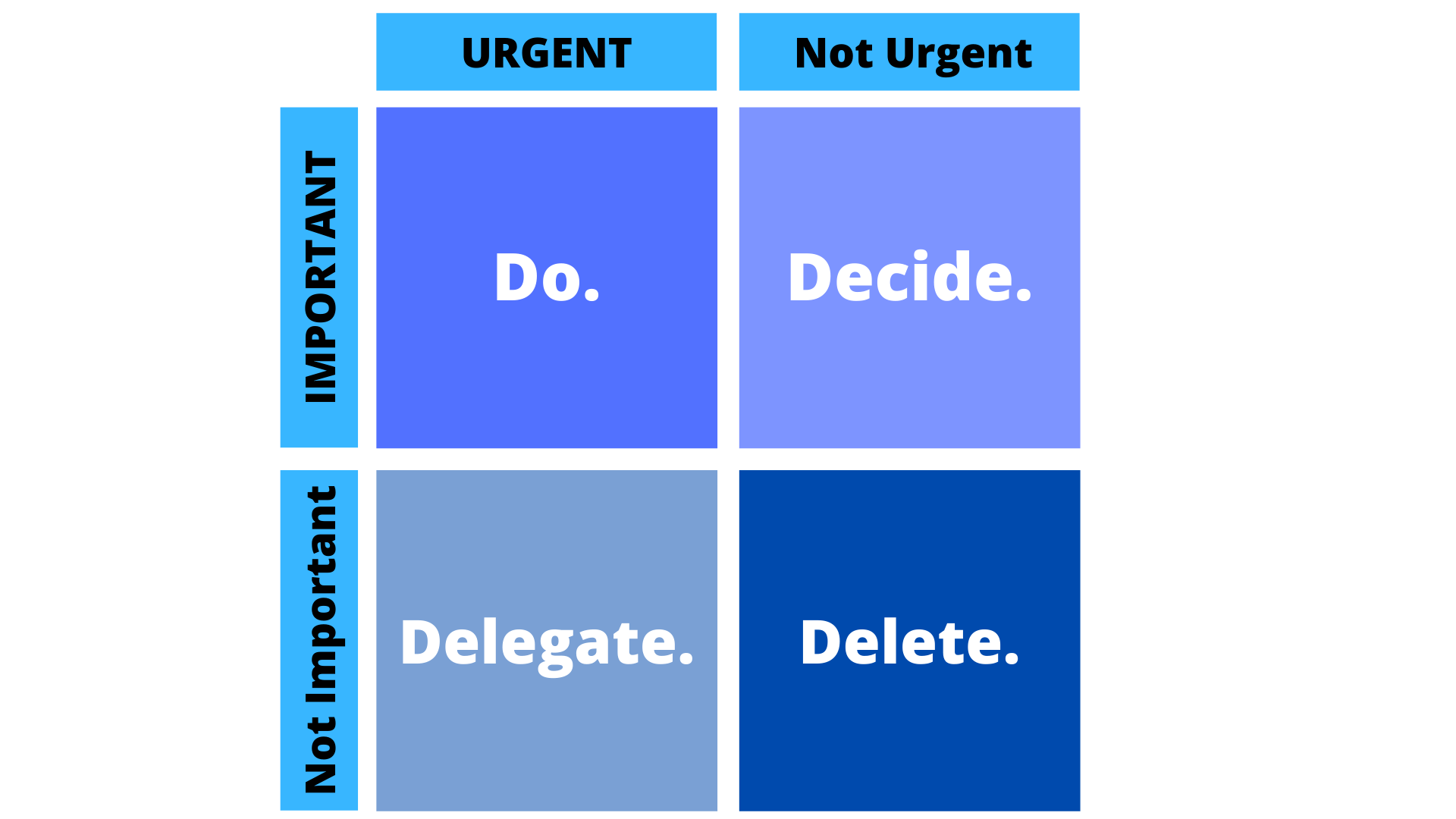5 ways to accelerate decision making

Every manager has a finite amount of time, attention and energy. As you grow your company, the volume of decisions can quickly become overwhelming. So how do you manage the work that needs to be done? What’s the best way to prioritize tasks? And what are some ways managers can make decisions more efficiently?
In this post we’ll outline five different approaches for accelerating decision-making in your business: 1) designing a system 2) delegating 3) prioritizing 4) using the right tools 5) encouraging rapid feedback.
1. Designing a decision-making system.
While decision making is often a top-of-mind issue for founders, it’s easy to get bogged down in decision fatigue. It can be difficult to maintain the momentum and motivation necessary to tackle decision making each day. One way of maintaining focus on decision making is by establishing a decision-making system that fits your needs.
It’s important to keep in mind that there’s no one-size-fits -all approach; what works for one company may not work for another. In this post we want to challenge you not only think about how you’re currently decisioning, but also encourage you to consider design elements like:

Defining roles and responsibilities: Who are the main decision makers? Are major decisions being made by consensus? Are there decision-makers who have decision making authority over certain topics (e.g., hiring, company culture), while others are excluded from decision making (e.g., pricing)? Ensure proper job descriptions are in place so that each person involved in decisions is clear about their role and responsibilities.
Establishing decision processes: How do decisions move through your system – top down or bottom up? Make sure you have your organizational hierarchy posted publicly so everyone knows who reports to who. If you’re using a bottom-up approach, make sure there are decision makers in place from each level, and that each person involved in decisions has a clear understanding of how to move up the chain.
Establishing decision guidelines: Documented guidelines help ensure that there’s a consistent approach to decision making in your company. They also help keep discussions focused on practical, actionable ideas rather than rehashing old topics or discussing theoretical ideas. Here are some guidelines you can consider implementing:
– Specific decisions should be required for approval by one person and communicated to the rest of the team through sub-group meetings
– Policies should never be added without an initial review period where anyone could point out potential problems. If problems occur as a result, a discussion should take place about what happened and how it could have been avoided. This helps build institutional knowledge around policies that have already been approved.
2. Delegating decisions.
You’ve likely heard the old adage, “Delegate or die!” and it couldn’t be more true. As you grow your company, tasks can quickly become overwhelming if you’re trying to manage everything yourself. There are many advantages to delegating responsibility – including increased productivity and time for strategic thinking — but only if you trust the people you’ve delegated authority to.
The first rule of delegation is “no surprises.” If something major changes or goes wrong while someone else is in charge of managing a project or part of your business, they should let you know right away. Delegation doesn’t mean abdicating responsibility; rather, it’s about getting team members who are responsible for specific tasks and projects to take ownership of them and feel empowered to make day-to-day decisions.
One way you can do this is by clearly defining the expectations that others are expected to meet. Then, after giving people time to adjust, trust them with autonomy. That means there shouldn’t be a constant stream of requests for updates or questions about how things are going. Instead, you should give team members space to work independently, trusting that they’ll consistently deliver on their commitments.
This will take time and a lot of trust on your part, but in the long run you’ll be setting yourself up for success by creating an environment where decision makers are empowered to make decisions quickly and communicate them effectively.
3. Prioritizing decisions.
Effective decision makers know how to prioritize their time. They realize that they can’t be part of every meeting, review every day’s work, or respond to every request for help. And while the temptation may be great to say “yes” to everything in order to please your co-workers and clients, you have a responsibility not only to those parties but also to yourself. You need time in order to think deeply about larger company strategy and focus on executing it effectively with minimal distractions.
Another advantage of prioritization is efficiency. If all decisions are equal, then no one will feel reluctant about being asked for an update or contributing ideas at meetings because there won’t be any fear that some requests will receive more attention than others will – unless that’s the best way to get results.
Urgency can be ranked on a scale of 1 to 10 (10 being emergency). Why? Because it’s important to re-evaluate urgency at regular intervals for all decision categories. In some cases, decision time frames may need to be adjusted or the decision category changed entirely.
Reactive and proactive approaches
Responsiveness matters in decision making because we operate in a world where people are impatient for answers. For example, if someone emails you to ask “Do you have this shirt in blue?”, do you have a process or protocol for responding to that question quickly? You should! You also might want someone designated as your decision making decision taker , who is responsible for replying to decision related emails. This person’s decision decision making process might be different from the decision maker on the team, but it gives them the responsibility of being responsive to decision requests while offloading some decision-making tasks onto someone else in order to keep that individual focused on more important or high priority decisions.
In terms of urgency, reactive and proactive approaches can be thought of as two sides of the same coin (see “Decision Triage: Prioritizing Projects With Urgency & Impact” for more information). If something is urgent today does it mean that you will need to put a similar decision on your plate tomorrow? Can you group together low priority decisions and tackle all decision category at once in order to maintain a regular cadence of decision making? These are just some examples of how decision priority can be adjusted.
4.Using the right tools.
When people think of decision-making, two thoughts usually come to mind: decision paralysis and information overload. It’s true – too many decision makers in one room can lead to inaction or lack of direction.
So how do you avoid this? Having the right tools for the decision – making decision will help your team make stronger decisions faster. The more high-quality decision support material available, the more informed decisions are made and the less time is spent debating options internally (or externally).
It should go without saying that you need a strong decision-making tools in place before starting any decision discussion. For example, project management tools like Asana or Trello can help managers organize their decision-making decision process in a way that helps them make faster decisions.

Slack is another important tool worth mentioning. It speeds up decision making by allowing for faster communication between team members. This is especially important for remote teams whose members are spread out across the globe.
Other tools like Decidely or Collective Idea allow for online decision polling that makes decision processes faster and easier. It’s also possible to use Google Sheets as a decision-making information platform, allowing you to quickly plug in any relevant data points and automatically generate a decision report based on key decision factors.
5. Encouraging rapid feedback.
Perhaps the most important weapon in your arsenal for making fast decisions is to have a feedback loop in place. Feedback loops are designed to allow you to make critical decisions more quickly and with fewer resources, which means that the decision is made faster and other people’s input isn’t needed.
For example, let’s say you want to launch an initiative but aren’t sure if it will work out or not. By setting up an effective decision-making process (using the examples above) that includes regular communication and data points, you can get rapid decision feedback from your team so that they know whether any changes should be made moving forward or if the change needs to be shut down altogether. This also keeps decision costs low and business risk as minimal as possible.
Final Thoughts
Sometimes the best decision is no decision. If you don’t have enough data to make an informed or strategic decision, it might be more beneficial to hold off on making a snap judgment in order to avoid potential mistakes and ensure that you’re using your resources wisely.
But if you are able to collect all of the necessary information for making a good decision, consider using an online platform like Decidely or Collective Idea for gathering feedback from business stakeholders and team members before announcing your final move. By taking time up front to gather as much feedback as possible, you can avoid any potential missteps later in the process – especially when it comes down to launching new programs and projects.
When used correctly, rapid decision-making tools can help managers and owners make better decisions faster, which leads to both business growth and cost savings.





